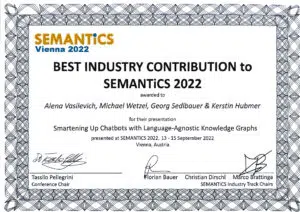
A German and an Italian go on a Polish online shop…this may sound a like the start of a bad bar joke, but this bizarre situation still occurs in real life, in spite of all the EU propaganda about the Digital Single Market. The German and the Italian simply won’t understand a single word. They cannot find any products in this Polish shop, as it has not embraced the idea of multilingual e-commerce.
Easy Fix Translation?
Even before considering multiple languages, surely translating static content and product catalogues at least into English would help? In some EU countries, half of the population has a satisfying passive command of English. However, that percentage quickly becomes minuscule when consumers have to enter the right English search term for a specific domain. Full translation into all, or even into major languages only, is cost prohibitive for most.
Domestic Customers Have a Hard Time, Too!
For domestic customers it’s not easy to find products either. Today’s string-based search often returns no matches, or it finds way too many and displays them in unintuitively sorted lists, which has the same effect. Instead of searching semantically for what the customer wants, online shops expect their customers to enter the very same strings they have used in their catalogues.
Scroll Hit Lists or Explore Product Offering?
Search results are always displayed in a list of matches: a column of product names or tiles of product images. Yet what if there are many matches in several different categories? An alternative, more natural way would be to display the search result graphically in a product tree with related products closely organized. This way the shopper can quickly find the product they were actually looking for and is motivated to buy more.
Social Shopping
E-commerce has increased buying options to a degree, which leaves many consumers completely lost. Therefore, online shoppers often rely on third party information such as test reports, customer feedback, and blog articles to make a buying decision. Shops should give their customers the comforting feeling of having made an informed and good decision, but without having to leave the shop.
Solution Architecture for Advanced Linguistic Product Search
All the above requirements, particularly the semantic and cross-language search, can be relatively easily fulfilled by deploying Advanced Linguistic Search (ALS) on top of a Multilingual Knowledge System (MKS). The following chart illustrates the architecture for finding products semantically and language-neutrally:

The ALS deals with language specifics such as morphology, spelling variations, etc. Deployed with the MKS, it can expand searches semantically and across languages. The MKS stores the product information in a knowledge graph. This way, found products are listed by semantic proximity and not by string match scores. Alternatively, the shopper can explore the offering in a product graph. Supporting third party information is provided and also machine translated if originally in a different language, to help the consumer to make buying decisions without leaving the shop.
Find, Upsell, Advice = Higher Revenue
The above solution, based on a Multilingual Knowledge System such as Coreon, enables online shops to increase sales. Without ongoing translation efforts, shops can drastically extend their customer base in the Digital Single Market. For shops in almost half of the EU countries, that increase would be hundredfold!
*Feature Image: Gold vector created by rawpixel.com – www.freepik.com



